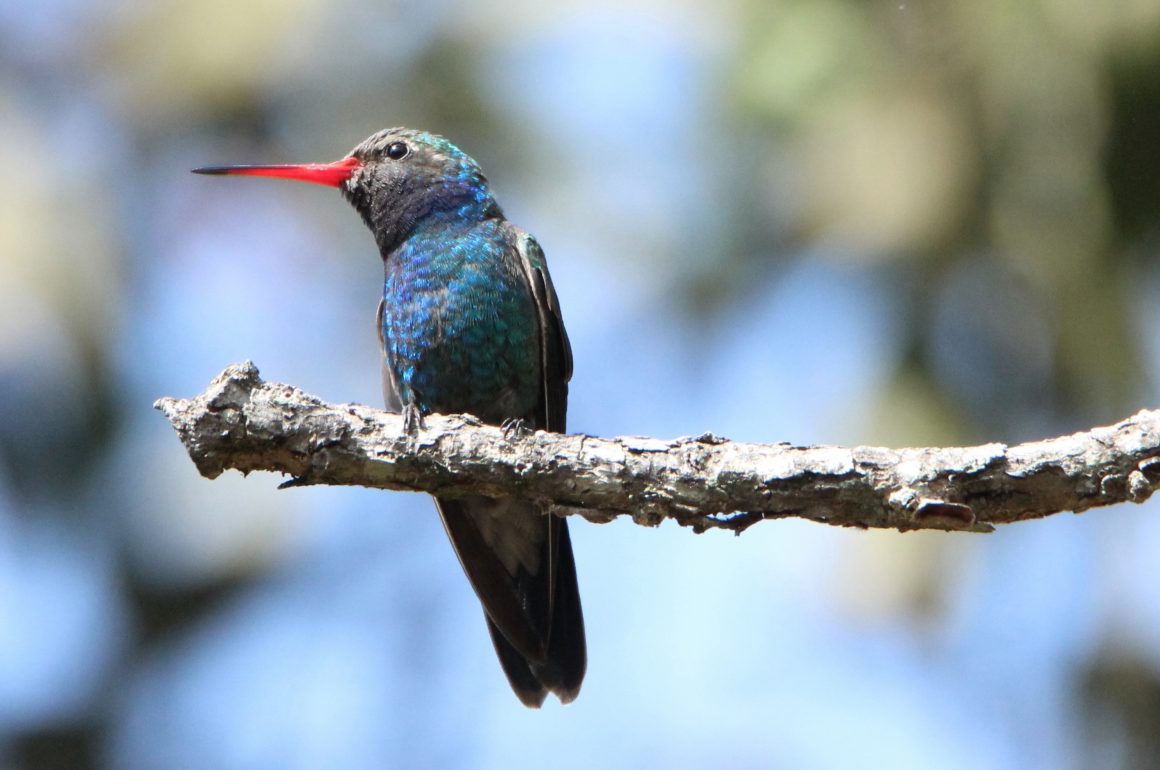
I got back into birding less than a decade ago, long after moving to Mexico in 1983. So I can hardly speak with authority on birding in the U.S. But even I have heard of how exciting southeast Arizona is for American birders. You fly to Phoenix, or Tucson, rent a car (or ride a bike cross-country, if you are Noah Strycker), drive to the tiny towns of Patagonia and Sierra Vista, and voila! All sorts of exotic and beautiful species may be seen.
This would sound attractive even to me, except for one fact: almost all of those exotic and beautiful species are common down here in central Mexico. Southeastern Arizona is unusual, precisely because its species mix is as much Mexican as it is American. A quick study as I researched this post revealed that fully 37 Arizonan “specialties” are common birds right here where I live. So the only Patagonia I would choose to visit in the future, is the Patagonia to be found at the southern end of South America.
Consider the striking Berylline Hummingbird. If I don’t see one or more in my very own garden on any given day, it’s because I just didn’t try. But it can only be found as a vagrant in Arizona. Beautiful Broad-billed Hummingbirds may be seen in summer in Sierra Buena, but they are also guaranteed all year long in my backyard. I’ll have to head for the woods to see multiple White-eared Hummingbirds, but where there are woods, this is among our most common hummers. Look in the right place, and year-round you can also find Violet-crowned and Rivoli’s Hummingbirds, Blue-throated Mountain-Gems, and Plain-capped Starthroats here. (These are all summer-only in Arizona.) Among the hummers shared between the two areas, only the Lucifer’s Hummingbird is seasonal in both: summer in Arizona, winter in our nearby lowlands.
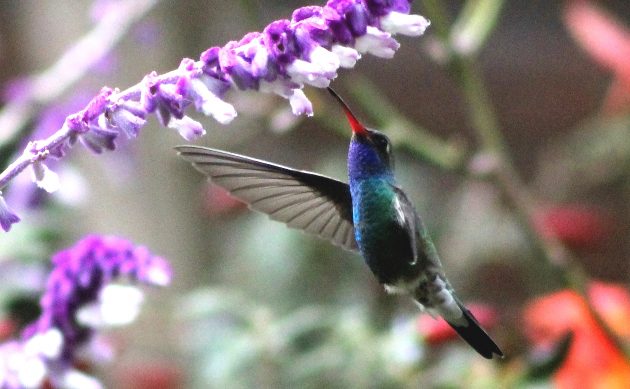
Broad-billed Hummingbirds are oh-so-common down here. This photo and the one at the top are both from my garden.
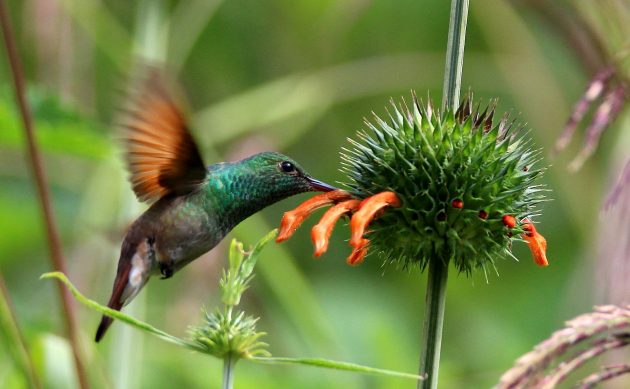
Berylline Hummingbirds are also as common as dirt down here.
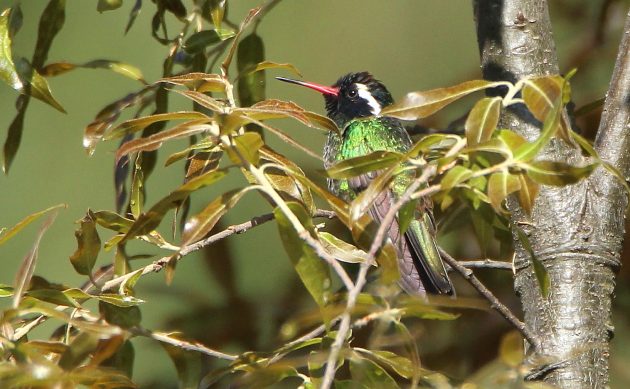
The White-eared Hummingbird: so common.
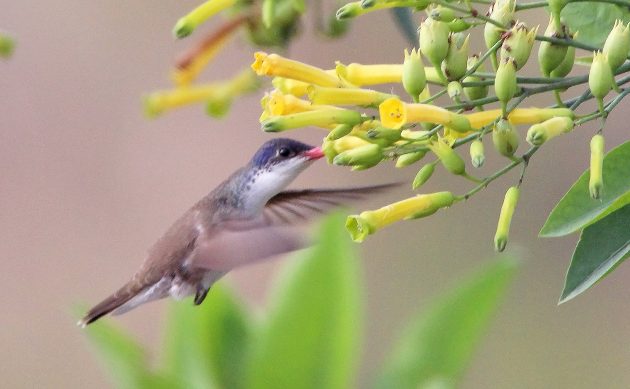
Go somewhere high and dry, and you are sure to see a Violet-crowned Hummingbird.
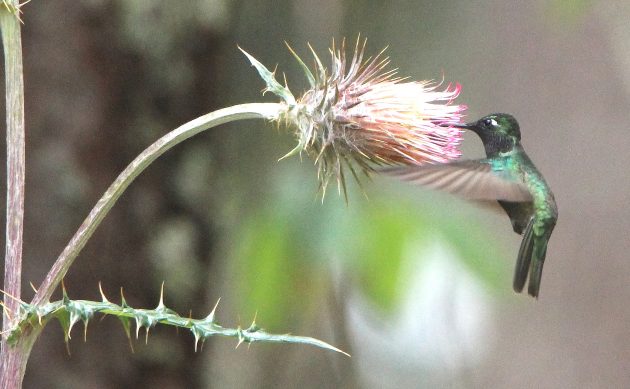
Rivoli’s Hummingbirds like moist woods, which we also have nearby.
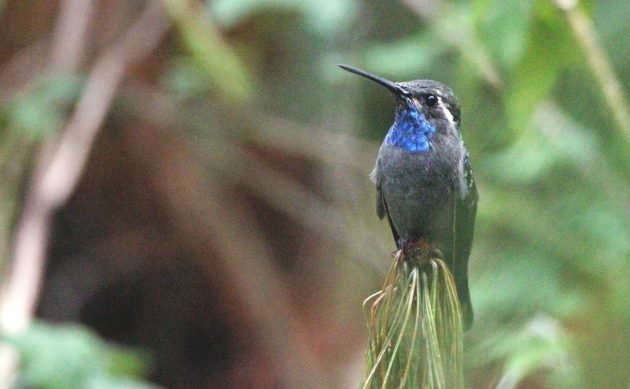
You’ll have to go high to find the Blue-throated Mountain-Gem. When they go low…
How about the Tyrant Flycatcher family? Visit Arizona in summer, and you just might see the Northern Beardless Tyrannulet, Greater Pewee, Buff-breasted Flycatcher, Dusky-capped Flycatcher, Tropical Kingbird, and Thick-billed Kingbird. But these are all year-round residents, and common, down here. And I can throw in lots of Tufted Flycatchers and Nutting’s Flycatchers (occasional vagrants in Arizona) for good measure.
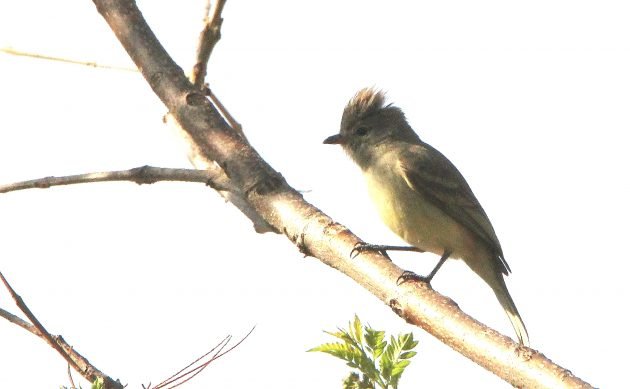
Northern Beardless Tyrannulets, adorable little flycatchers, rarely visit my garden. But this one did.
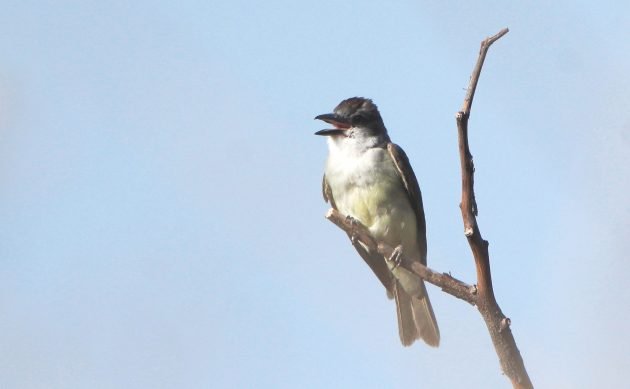
Anywhere low and dry here is likely to offer up Thick-billed Kingbirds.
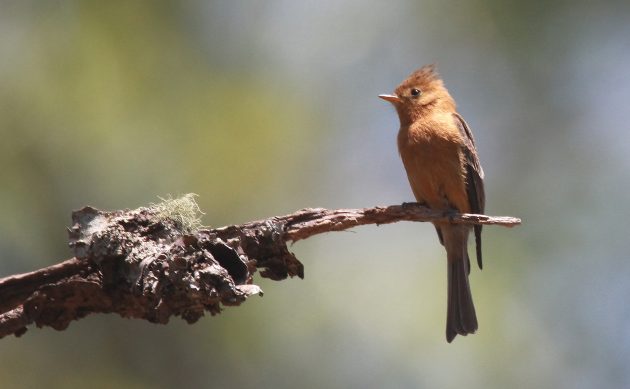
Tufted Flycatchers are easy.
And the list goes on… Summer wood warblers in Arizona include the Grace’s and Red-faced Warbler, and the Painted Redstart. With extraordinary luck you may see vagrant Crescent-chested and Rufous-capped Warblers, and Slate-throated Redstarts. But those are all full-time residents of central Mexico, with the exception of the Red-faced Warbler.
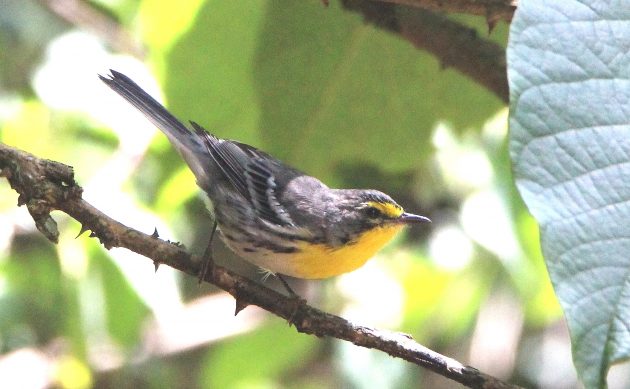
I took this photo of a Grace’s Warbler just this Monday.
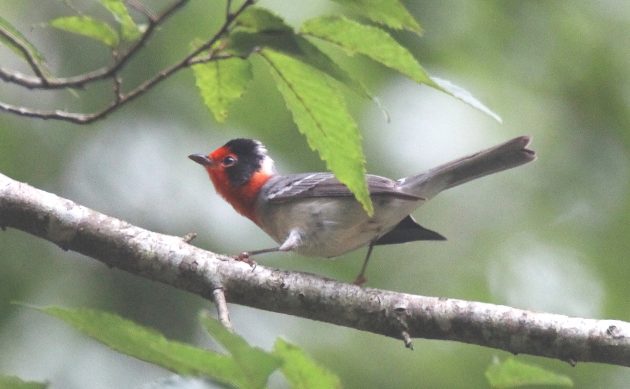
I love Red-faced Warblers!
Residents of southeastern Arizona that you can also see here are the Ferruginous Pygmy-Owl, Yellow-eyed Junco, and Elegant Trogon. (But down here, I’ll throw in the Mountain Trogon for good measure.) And the list of other Mexican vagrants that might just cross the border is long, including such beautiful birds as the Northern Jacana, Short-tailed Hawk, Rose-breasted Becard, Mexican Chickadee, Flame-colored Tanager, and Streak-backed Oriole. I could throw some super-vagrants into my list, but let’s be honest, you wouldn’t really see those up there, anyway.
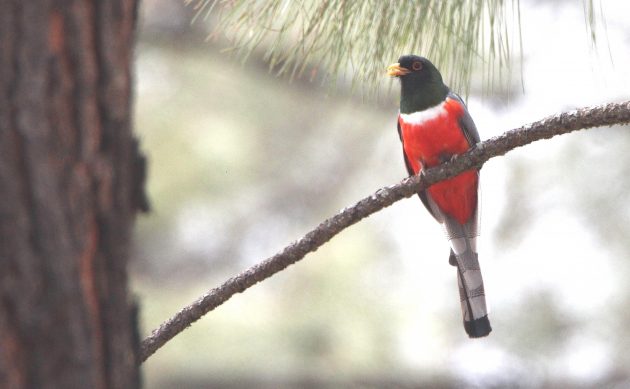
Why yes, I agree — my Trogon IS Elegant!
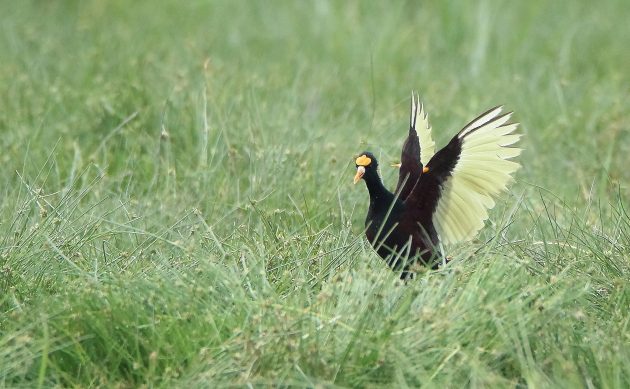
My only regret is that you can’t see this Northern Jacana’s supersized feet.
Of course, I am sure that southeastern Arizona does have some advantages. No passport is necessary, and you don’t have to fill out one of those free tourist visa forms. If you live on the west coast of North America, Arizona is much closer. (But not if you live on the east coast… Check it out on a map; you’ll be surprised! You can fly direct to Mexico City from many American cities; while you can fly direct to Morelia from Oakland, Los Angeles, Houston, Dallas, and Chicago. But it will cost more to fly to Mexico, somewhere in the neighbor hood of $600 USD round-trip. But hotels and meals are likely to be much cheaper down here.
In Arizona there isn’t any language barrier — for the most part! But in Mexico, English might be hard to come by outside of hotels and restaurants. (Most professional birding guides here can speak English.) If you choose to eat Mexican food in Arizona, it is likely to be that Tex-Mex kind you are familiar with, not the suspiciously exotic and varied real kind. And, unlike Morelia or Mexico City, the towns and cities of southern Arizona were not founded in the 1500s, and are not UNESCO World Heritage Cities. So there is way less culture to distract you from your birding.
In Arizona, however, you may have to deal with Cyber Ninjas. So that’s a big negative.
As you can guess, I have my clear preference between these two options. Come on down, see all these species we share with that one little corner of the U.S., and check out the very long list of additional species that central Mexico shares with no other place in the world. But if crossing international borders makes you nervous, sure, go to Arizona. I’ll send you a few hummers.
After finishing this post, I thought it over and decided I should add a couple of disclaimers: 1. Arizona is a lovely state, and is home to many lovely people, including one of my brothers-in-law. We just have better birds. 2. I am aware that it is probably not time to travel yet. But hey, we can dream, can’t we? And save up for that ticket to go birding in Mexico.











Leave a Comment